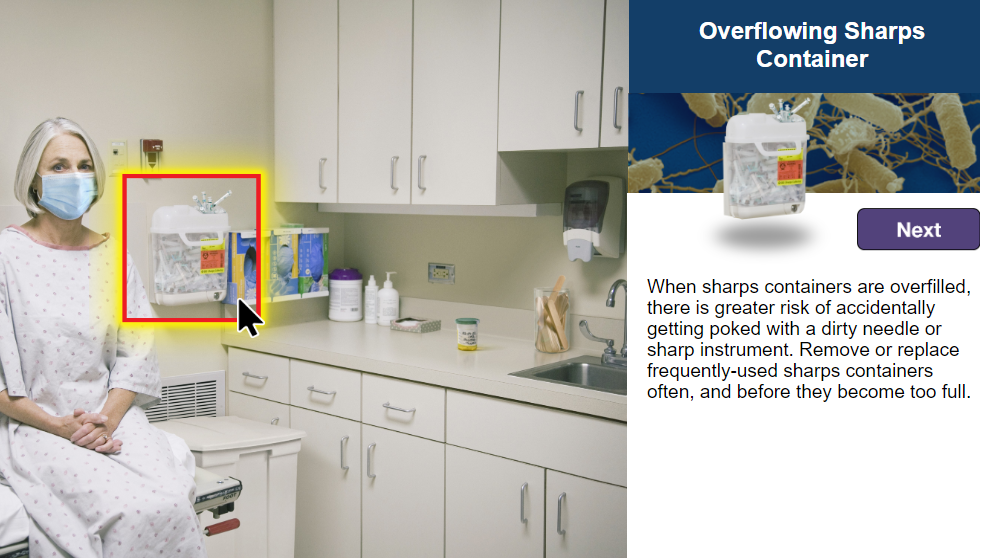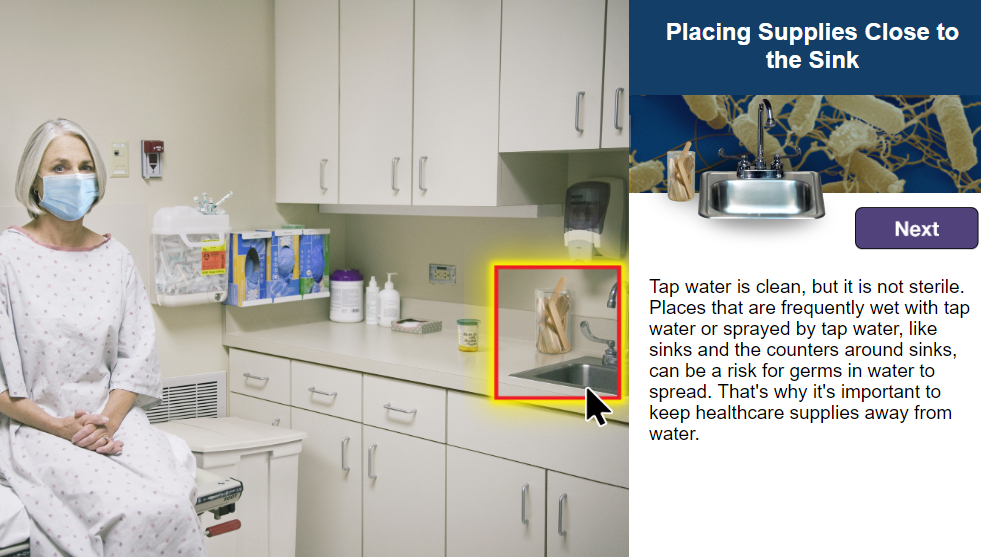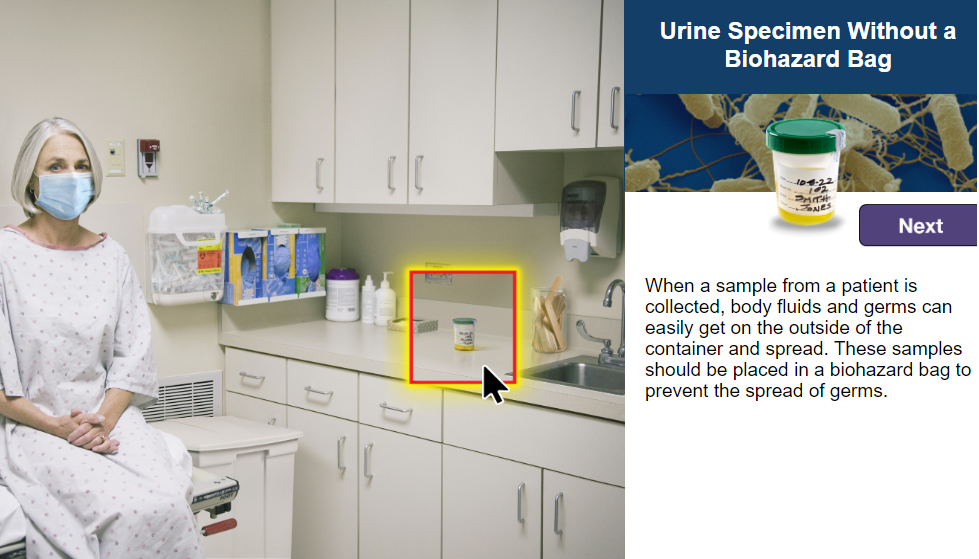
What’s Wrong with This Picture? Outpatient Exam Room
The U.S. Centers for Disease Control & Prevention’s Project Firstline program offers training and educational resources on various infection control topics, including risk recognition and infection control basics related to COVID-19.
These training and educational resources are designed for all healthcare workers, no matter their role or educational background.
Join us as Salud America! explores Project Firstline’s interactive infection control resources for healthcare workers through a three-part series on, “What’s Wrong with This Picture?”
Part 1 tackled the emergency room. Part 2 focused on the nurse’s station.
Today, we will address an outpatient exam room.
Can You Recognize Infection Control Risks?
Healthcare workers must be aware of where germs live and how they can spread to surfaces and people.
In the picture below, there are four problems that may cause germs to spread. Can you identify these issues and how to fix them?

Hint: look sharp!
An overflowing sharps container is a biohazard because it increases the risk of someone being poked with a dirty needle or other sharp medical instrument that has germs on it.
To prevent germs from spreading, its important to regularly remove or replace sharps containers before they become too full.

Is it stuffy in here, or is it just me?
If you look closely in the same area, you may notice that the exam room’s air vent is blocked by the trashcan.
A blocked air vent may not seem like an opportunity for germs to spread, but good ventilation can help remove things from the air that we don’t want to breathe in, such as chemicals and dust – and small virus particles like SARS-CoV-2.
If you see an air vent blocked by something that can be moved, move the item to promote good ventilation. If the air vent is blocked by something that can’t be moved, like a cabinet, inform your supervisor.

The next infection control risk may make your heart sink.
That’s right – healthcare supplies should not be kept near the sink because they could become contaminated by tap water.
While tap water is clean, it’s not sterile. Germs from tap water can spread to other surfaces and objects. That’s why healthcare supplies should be kept away from areas that can become wet or are frequently sprayed with water.

Don’t let your gaze drift far from the sink to find the final infection control risk!
Body fluid samples should always be placed in a biohazard bag to prevent the spread of germs.
In the picture below, germs on the outside of the patient’s urine sample container could spread to the countertop and anyone who handles the specimen.

Why Use Project Firstline Interactive Resources?
You can help stop infections when you recognize the risk for germs to spread!
These interactive resources are a great way to refresh your infection control knowledge and skills.
Additionally, CDC Project Firstline offers short and easy to understand training modules that can help you earn continuing education credit.
We believe that you have the power to stop the spread of infectious diseases, including COVID-19, and protect vulnerable patients and communities, such as Latinos!
What Can You Do to Promote Infection Control in Your Healthcare Setting?
Help keep yourself, your colleagues, and your patients safe from infectious disease threats, such as COVID-19, by building on your infection control knowledge!
To show your dedication, sign this pledge to complete an infection control training or activity through CDC’s Project Firstline!
You can also share infection control training opportunities with healthcare colleagues via LinkedIn with our Project Firstline social media toolkit.
You can access more information about infection prevention and control in healthcare by visiting resources from CDC Project Firstline.
Salud America! at UT Health San Antonio is working with the National Hispanic Medical Association to bring Project Firstline infection control educational content to healthcare workers, so they are equipped with the knowledge they need to protect themselves, their facilities, and their patients (Latinos and all communities) from infectious disease threats in healthcare settings.
Check out some of the articles from this partnership:
- What is Project Firstline?
- What is the Goal of Infection Prevention and Control in Healthcare Settings?
- What’s a Virus?
- What is Ventilation and Why Does It Matter?
- Contact Time: What is It and How Does it Impact Infection Control?
- The Surprising Difference Between Cleaning and Disinfection
- What’s a Respiratory Droplet and Why Does It Matter?
- We Need to Talk about Hand Hygiene Again
- Why are Gowns, Gloves, and Eye Protection Recommended for COVID-19?
Check out some of the Latino healthcare workers who are heroes for infection control:
- Anna Valdez: Tackling Infection Control with Education from Classroom to Clinic
- Wanda Montalvo: Preventing Infections in Community Health Centers, Latino Communities
- Ricardo Correa: Endocrinologist and Infection Control Leader for the Latino Community
Learn More about Project Firstline!
Editor’s Note: This article is part of a collaboration between Salud America!, the National Hispanic Medical Association, and the CDC’s Project Firstline. To find resources training materials, and other tools to bolster knowledge and practice of infection control, visit Project Firstline and view Salud America!’s infection control content.
The post What’s Wrong with This Picture? Outpatient Exam Room appeared first on Salud America.

